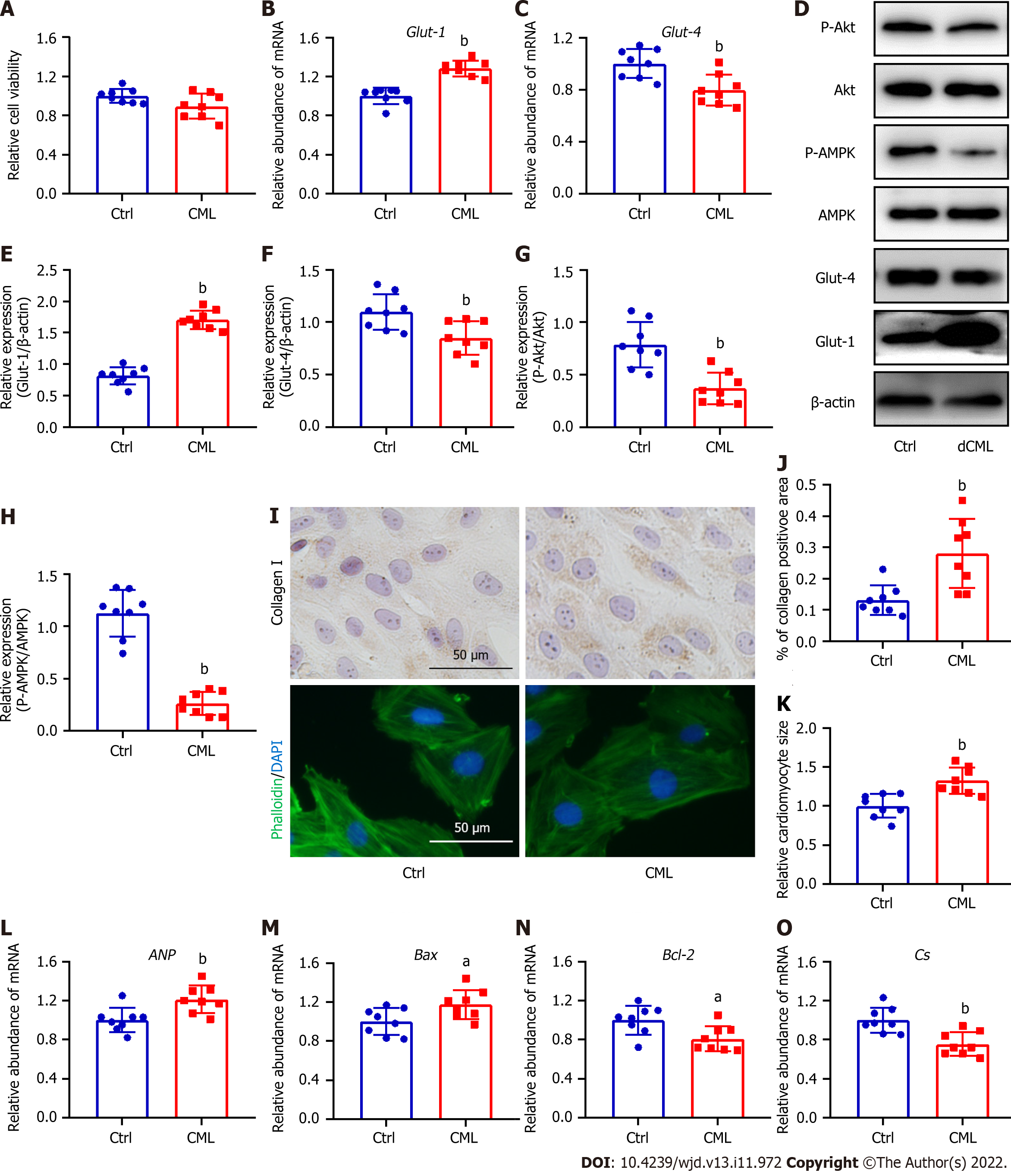Copyright
©The Author(s) 2022.
World J Diabetes. Nov 15, 2022; 13(11): 972-985
Published online Nov 15, 2022. doi: 10.4239/wjd.v13.i11.972
Published online Nov 15, 2022. doi: 10.4239/wjd.v13.i11.972
Figure 5 Exogenous Nε-(carboxymethyl)lysine inhibits the glucose metabolism and promotes collagen I expression, hypertrophy and apoptosis in H9C2 cells.
A: Cell viability after the simulation of Nε-(carboxymethyl)lysine (CML); B and C: Quantitative PCR detection of glucose transporter (Glut)-1 and Glut-4 mRNA; D-H: Relative expression of Glut-1, Glut-4, phospho-Akt, and phospho-AMP-activated protein kinase (AMPK) in H9C2 cells; I: Upper: Detection of collagen I content with immunocytochemical staining; bottom: Phalloidin-labeled H9C2 cardiomyocytes; J: Quantification of collagen I-positive areas; K: Quantitative analysis of cardiomyocyte area; L-O: Atrial natriuretic peptide (ANP), Bcl-2-associated X (Bax), B-cell leukemia/lymphoma 2 (Bcl-2), and citrate synthase (CS) mRNA levels in H9C2 cardiomyocytes. dCML: Dietary CML. n = 8 independent experiments. aP < 0.05, bP < 0.01, compared with the control (Ctrl) group.
- Citation: Wang ZQ, Sun Z. Dietary Nε-(carboxymethyl) lysine affects cardiac glucose metabolism and myocardial remodeling in mice. World J Diabetes 2022; 13(11): 972-985
- URL: https://www.wjgnet.com/1948-9358/full/v13/i11/972.htm
- DOI: https://dx.doi.org/10.4239/wjd.v13.i11.972









